SLVUCQ7 july 2023 TPS7H2201-SEP
3.1 Default Configuration Results
All tests were performed using the default configuration shown in Table 2-1.
CAUTION: Under extreme fault conditions
(a constant GND short on the output for example), if the device is configured for
current limit and retry mode, then the amount of power dissipates is large. If left
unchecked, then this on-off behavior can cause the board to heat up quickly.
Programmable Fault Timers
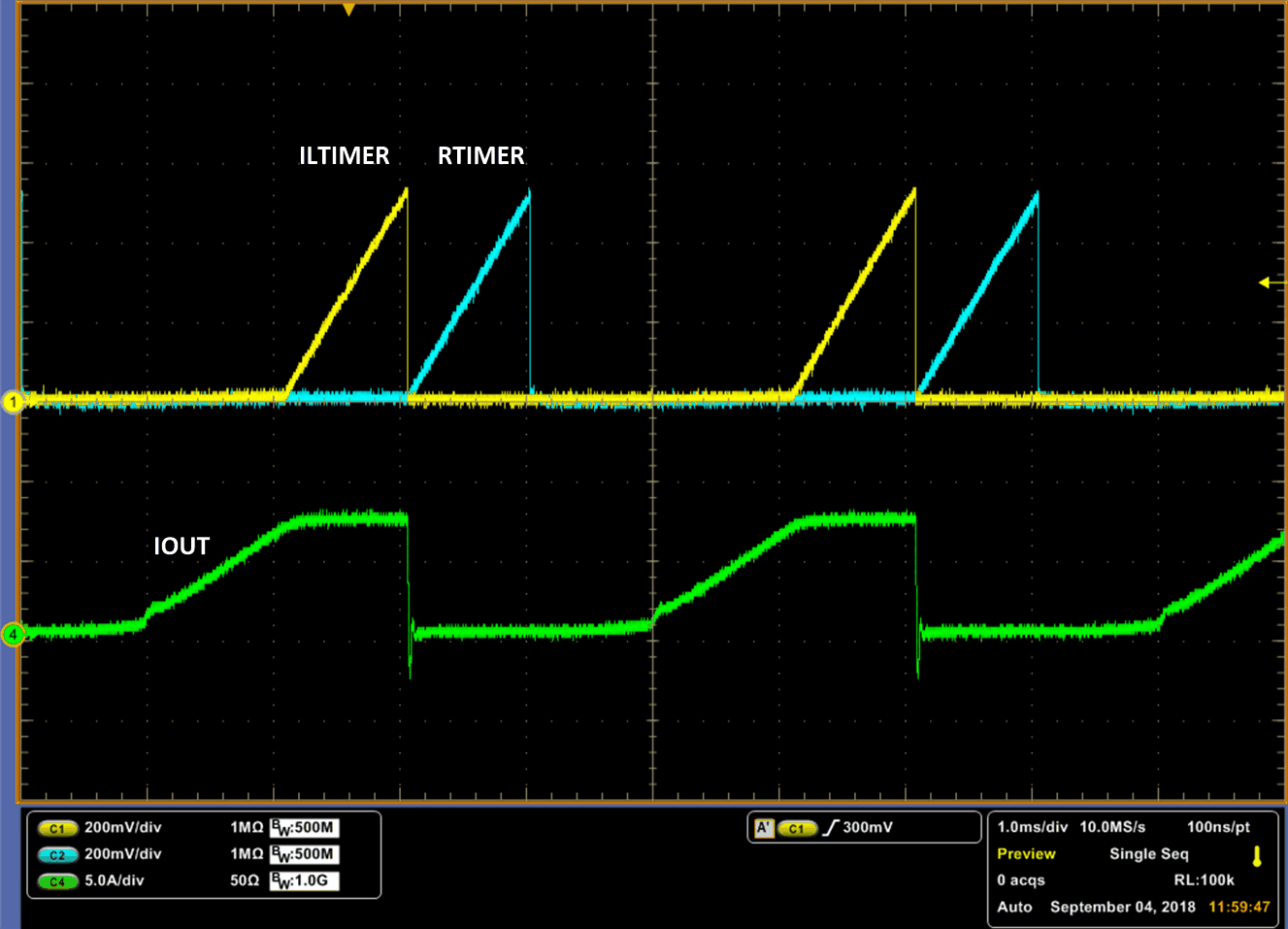 Figure 3-1 ILTIMER and RTIMER Waveforms
for IL=7.5 A
Figure 3-1 ILTIMER and RTIMER Waveforms
for IL=7.5 APower Up and Power Down
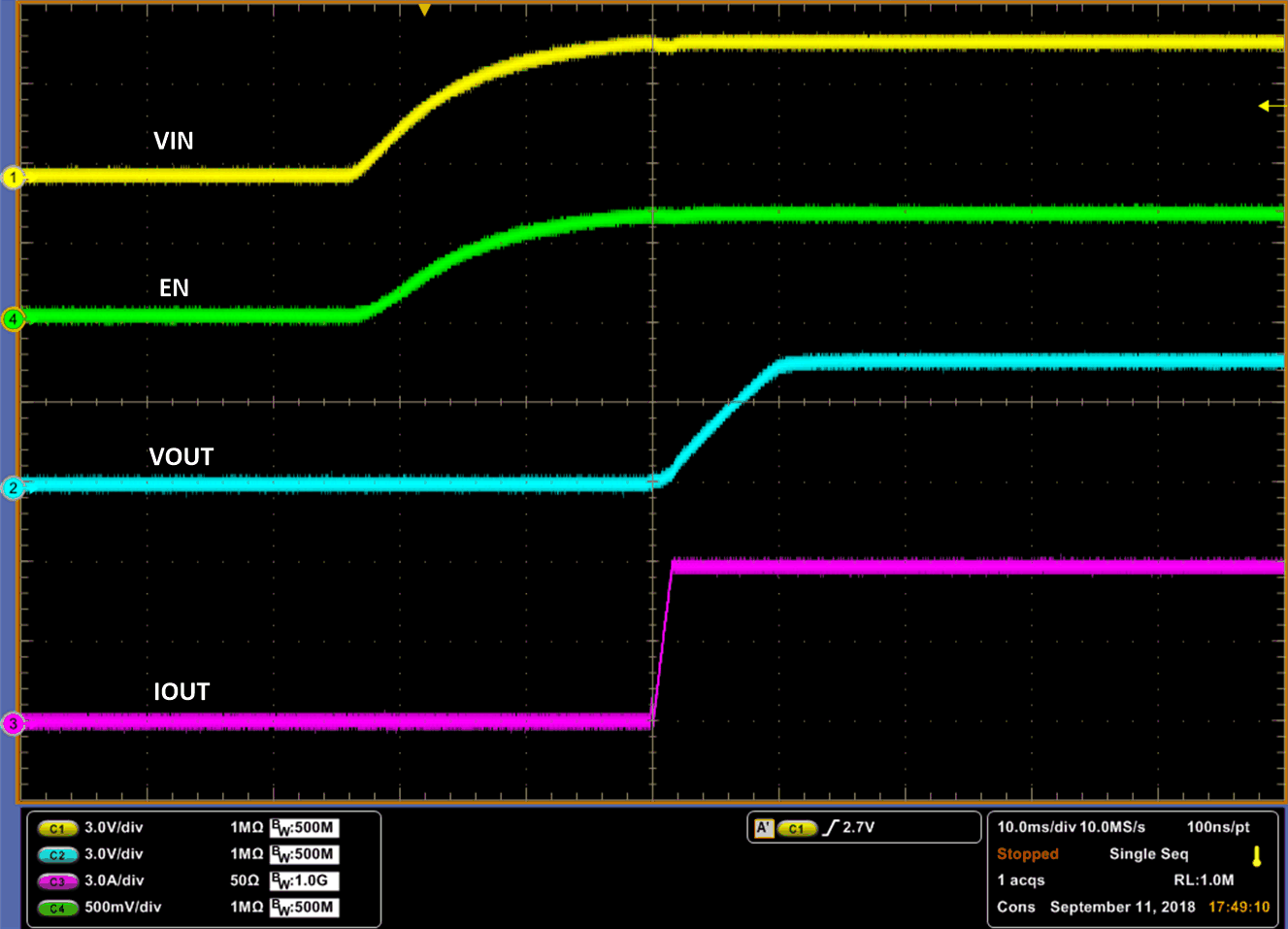 Figure 3-2 Power-up
Figure 3-2 Power-up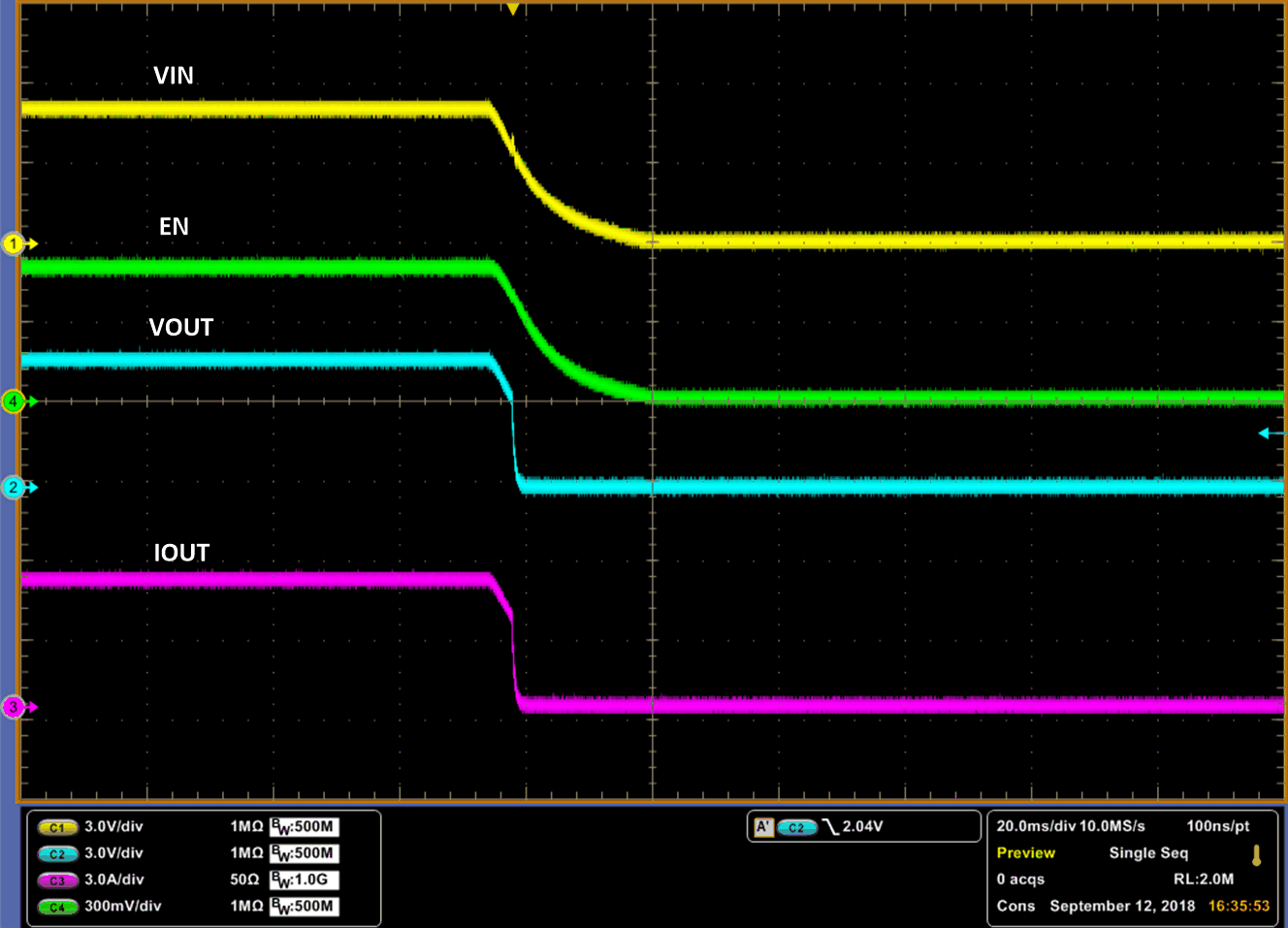 Figure 3-3 Power-down
Figure 3-3 Power-downOvervoltage Protection
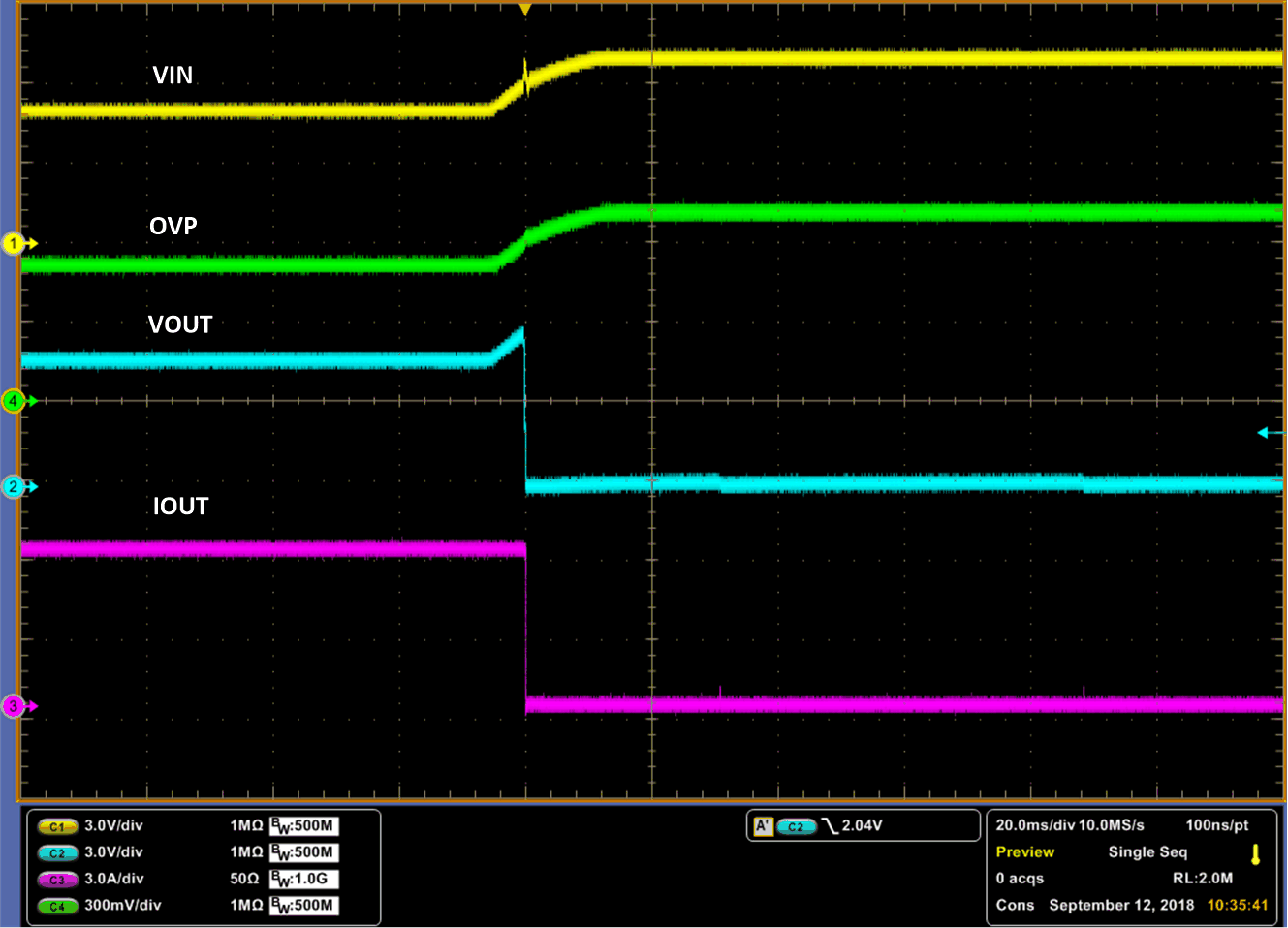 Figure 3-4 OVP Assertion at VIN = 6
V
Figure 3-4 OVP Assertion at VIN = 6
V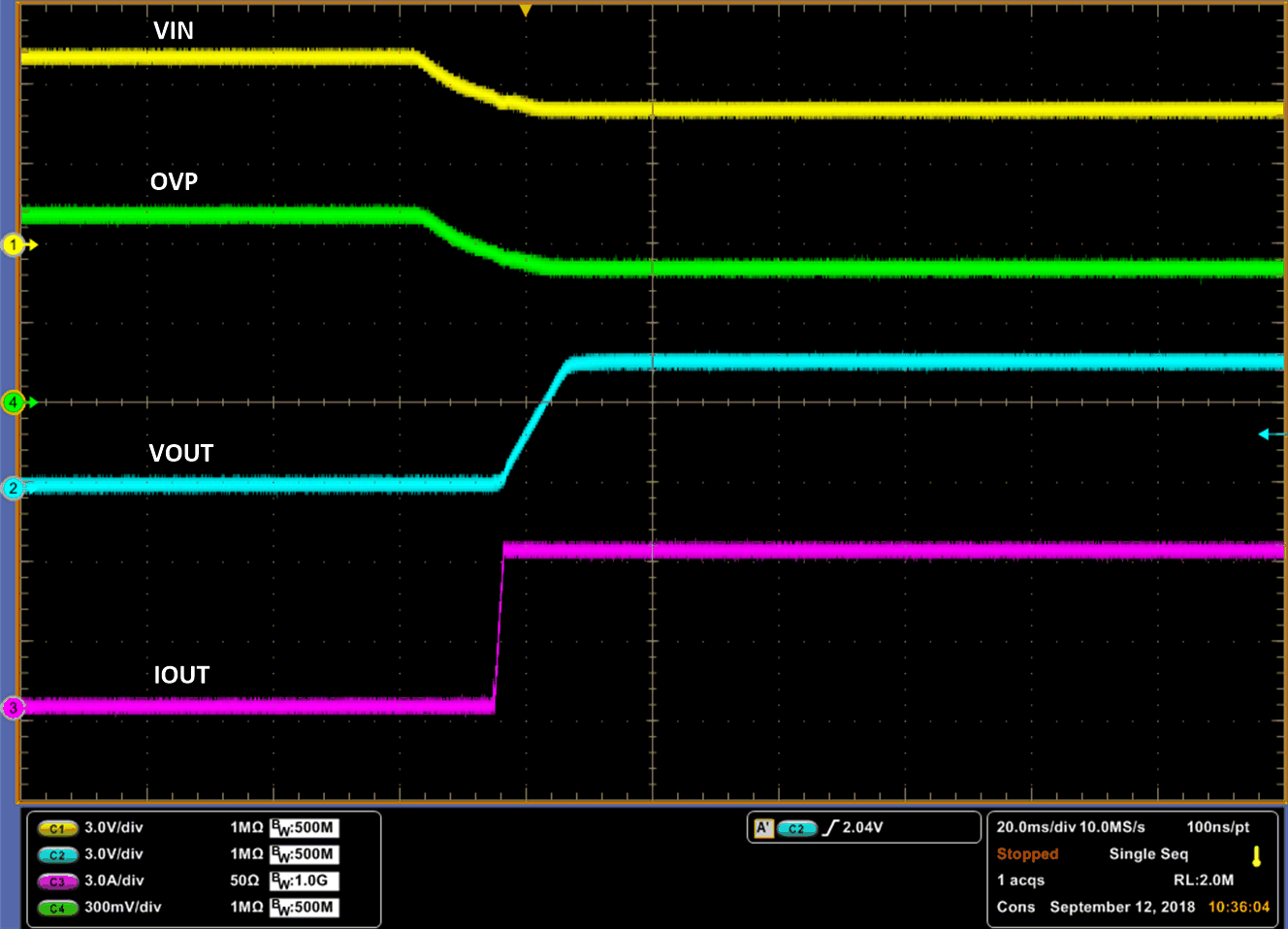 Figure 3-5 OVP Deassertion by Returning
VIN = 5 V
Figure 3-5 OVP Deassertion by Returning
VIN = 5 V